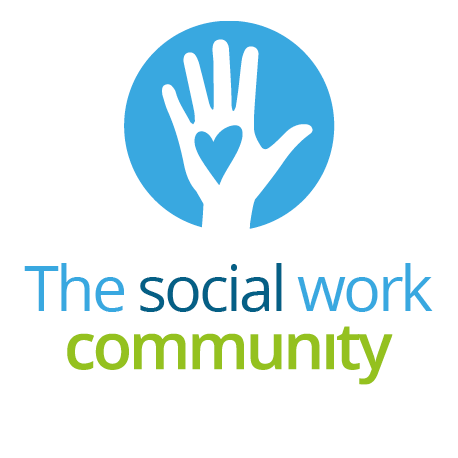
Children’s social care in England is currently undergoing significant reform. The Department for Education (DfE) intends the changes to provide families with earlier, more effective support, to keep them intact where possible, improve child protection practice and give children in care and care leavers greater stability, security and opportunity.
Alongside the changes, the DfE wants services for children and families to be significantly more informed by research into what works.
It has commissioned a series of “practice guides” to “translate the strongest available evidence into actionable recommendations” for service delivery.
Practice guides on social care evidence base
So far, guides have been published on kinship care, parenting support for families in adversity with children aged 0-10 and mentoring and befriending services for children in care and care leavers, with more in the pipeline.
The body responsible for the guides is Foundations, the evidence centre for children and families formed in 2022 from the merger of What Works for Children’s Social Care (WWCSC) and the Early Intervention Foundation (EIF).
The practice guides form part of a “toolkit” to support the uptake of evidence-based practice, alongside a guidebook published last month by Foundations, rating research on over 130 interventions with at least preliminary evidence of improving children and families’ outcomes.
Guidebook of research findings
The guidebook is an updated version of one published previously by the EIF. For each intervention, it provides:
- A rating – from two to four – of the strength of the evidence behind it, based on the relative rigour of the research base and whether the impact on outcomes is short- or long-term.
- A separate rating – from one to five – on the cost.
- Which of six outcomes it affects: enhancing school achievement and employment; preventing child maltreatment; preventing crime, violence and antisocial behaviour; preventing obesity and promoting healthy physical development; preventing risky sexual behaviour; preventing substance misuse, and supporting children’s mental health and wellbeing.
- Information on who the intervention is for (eg children aged 11-16), whether it is universal or targeted, the setting it is delivered in, the workforce required, whether it has been tested in or is available in the UK and the race and ethnicity of the families in the underpinning studies.
- A downloadable report providing a full description of the evidence base.
Lack of children’s social care schemes
The EIF guidebook was, understandably, focused on early intervention measures and Foundations has not added any additional children’s social care-focused interventions to the updated version.
This is reflected in the fact that just six of the interventions in the guidebook have evidence for preventing child maltreatment, though there are others that are relevant to children in the social care system.
Foundations’ director of evidence, Aoife O’Higgins, says that it will be adding social care interventions to the guidebook, drawn from the practice guides it has produced for the DfE.
“Within the practice guides, we make recommendations about specific interventions that speak to the children’s social care context,” says O’Higgins, who has a research background in children’s social care and previously worked as a practitioner in the sector. “And eventually, all of those will be assessed to go in the guidebook.”
Focus on interventions over systems and practice
The focus of the guidebooks is on “interventions”, which Foundations describes as “manualised (written down), well defined, repeatable activities with a beginning and an end”. These will often need to be commissioned by local authorities, rather than delivered by their core teams.
It does not cover broader-based, system-wide programmes or practice approaches that social workers or other practitioners can apply in their day-to-day work.
O’Higgins says this reflects the strength of the evidence.

Aoife O’Higgins, director of evidence at Foundations
“Our position is that [good outcomes are] really a combination of having a skilled, confident workforce – really good social work practice – and evidence-based interventions,” she adds. “And at the moment, the strongest evidence we have for changing individual outcomes is around individual interventions.”
However, she says, Foundations is also aiming to identify and distill the common elements of effective interventions so that social workers can be trained to deliver as part of their practice with families.
‘Little known’ about effectiveness of practice models
Despite local authorities across England implementing practice models in children’s social care services, Foundations has previously said “little is known” among which works best.
Evaluating their effectiveness is among five priorities set by Foundations for its work from 2023-27, and it has continued studies begun by WWCSC into three models:
- Family safeguarding – this involves teams of children’s social workers and specialist adults’ practitioners working using techniques such as motivational interviewing to tackle the root causes of adult behaviours that increase concerns about children. The DfE innovation programme’s evaluation of the model found, in 2020, that it was effective at preventing children from being looked after and reducing the number on child protection plans.
- Family valued – under this model, families are offered family group conferences (FGCs) prior to statutory intervention, to enable them to develop their own solutions to problems, with services commissioned to act on the outcomes of FGCs. The innovation programme evaluation of the scheme in Leeds, published in 2017, found statistically significant reductions in numbers of looked-after children, children in need and child protection plans, 16 months into the programme.
- No wrong door (NWD) – this involves multidisciplinary teams supporting young people in, or on the edge of, care, through residential and outreach provision and an allocated key worker, with a view to reducing numbers going into care or supporting permanence, reunification or independence. The innovation programme evaluation of the approach in North Yorkshire, published in 2017, found that more NWD young people have ceased to be looked after, compared to a matched cohort, during the first two years of the scheme.
O’Higgins says that Foundations believe that what these practice models offer is “really good”.
But she adds: “These are really complex interventions and really complex, in some cases, system change. And that is really hard to evaluate using the methodologies that we prefer as a what works centre.”
Preferred methodologies
Foundations’ preferred methodologies have shaped the practice guides it has produced for the DfE.
Each is based on a “systematic review” – a synthesis and appraisal of available evidence that meets predefined criteria on a particular issue. These reviews only include two types of study to test the impact of interventions:
- Randomised controlled trials (RCTs), under which participants are randomly assigned to either a group receiving the intervention or a group not receiving it, to isolate the impact of the intervention.
- Quasi-experimental studies, which seek to examine the causal impact of an intervention without randomly allocating participants to an intervention and a control group.
In its practice guides, Foundations describes the evidence for the effectiveness of an intervention as being “strong” if it is based on a synthesis of at least two RCTs or quasi-experimental studies conducted in the UK or similar high-income country that have a low risk of bias and sample sizes of at least 20 in the intervention and control groups.
Where the risk of bias is moderate and the other conditions are met, the intervention is described as having “good evidence”, and where there is only one RCT or quasi-experimental study to rely on, with low or moderate risk of bias, the evidence is “promising”.
Findings on kinship, parenting support and mentoring
The kinship practice guide said there was good evidence for so-called kinship navigator programmes, which provide carers with specialist practitioners and information to help them access the support to which they and the children they care for are entitled. Other interventions, such as providing carers with a financial allowance or parenting support when children exhibit behaviours that challenge them, had promising evidence.
The guide on parenting support for families with children aged 0-10 found strong evidence for interventions to strengthen child-parent relationships, improve child behaviours and parenting practices, and reduce parental stress. Parenting interventions also had promising evidence for reducing harm to children.
In relation to mentoring and befriending schemes for care-experienced children, Foundations concluded there was strong evidence that programmes including skills development and one-to-one mentoring improved general mental wellbeing and post-traumatic symptoms in children aged 9-11. There was also good evidence for mentoring programmes reducing offending, along with promising evidence for them supporting family reunification, greater permanency, transitions from care for children with disabilities or severe mental health challenges, and employability.
Strength of the evidence
The practice guides’ conclusions on the evidence base appear to have been stronger, in certain respects, than those in the systematic reviews on which they are based.
For example, the systematic review on mentoring and befriending, by academics at Liverpool John Moores University, concluded that the “current evidence about what works is limited”.
It made “a tentative finding that mentoring and befriending programmes may be more effective when combined with skills training”, based on studies of the Fostering Healthy Futures for Preteens (FHF-PT) for children in care in the USA.
But it stressed that further research was needed to “understand how and which types of models operate best within a UK context”.
Applying US research to the UK
O’Higgins says: “Fostering Healthy Futures is extremely well-evidenced in the US and therefore we should take it very seriously and really think of it as one of our best bets. But it’s difficult to say that this is going to work here.”
She adds: “So what we’re trying to do here is say, ‘the evidence, as it stands, is really good here, so we’d like to recommend that local authorities at least look into this model, and where they can, implement this, because we think this is the best bet for shifting the dial on children’s outcomes’.
“But there are still lots of questions that need to be asked and lots of testing that needs to be done.”
This will be helped by a feasibility study into the model being funded by the National Institute for Health and Care Research.
Children’s social care’s ‘thin evidence base’
In terms of Foundations’ broader approach to its practice guides, she says: “Our experience of doing evidence translation is that where we are very equivocal with our findings , it’s not helpful to local authorities.
“So we’re desperately trying to find that middle ground, where we are making clear recommendations while staying true to how secure we feel about the evidence. Which is an extraordinary challenge.”
Also, it is only selecting topics for practice guides where there is an evidence base on which to draw.
“The reality is that we are dealing with quite a thin evidence base in children’s social care. So we have deliberately chosen topics, through a range of mechanisms, but one of the criteria for our topic selection is that there needs to be an evidence base were we can say some helpful things to the sector.”







 Bournemouth, Christchurch and Poole
Bournemouth, Christchurch and Poole  Hampshire County Council
Hampshire County Council  Oxfordshire County Council
Oxfordshire County Council  South Gloucestershire Council
South Gloucestershire Council  Wokingham Borough Council
Wokingham Borough Council  The highs and lows of a children’s services’ transformation journey
The highs and lows of a children’s services’ transformation journey  Embedding learning in social work teams through a multi-agency approach
Embedding learning in social work teams through a multi-agency approach  The family safeguarding approach: 5 years on
The family safeguarding approach: 5 years on  Harnessing social work values to shape your career pathway
Harnessing social work values to shape your career pathway  Workforce Insights – showcasing a selection of the sector’s top recruiters
Workforce Insights – showcasing a selection of the sector’s top recruiters  Free CPD on Parkinson’s for health and social care staff
Free CPD on Parkinson’s for health and social care staff 

 Facebook
Facebook X
X LinkedIn
LinkedIn Instagram
Instagram
#really…. try Bojan Radej for a fresh perspective on evaluation methodology …
… as ever is the case witb background evaluation metrics the orthogonality destroys the inevitable indeterminacy….
… most mathematicians from Gobel (incompeteness) to Pierce (thirdness) include the inevitable leaps of faith or Tychism …
… it would be interesting to see how a study of evaluation methodology has transitions from the, then, Nothing Works and prompted the setting up if the YJB >>>> What Works, now ….
…. asking what are the in-use axioms of practice eg volume of work/pressure of time versus the double complexity of uncertainty reduction and the rationality of the observers self validation; O’Highins is right to emphasise the #really hard of finding ‘the middle’ …
… Radej (2021) in Complex Society: In the Middle of a Middle World offers (Ch 1 Social Complexity pg1-76) a detailed justification for ‘the middle way’ and, to repeat as O’Highins said’ it’s far from easy reading …
… it is though, now, essential reading 📚 ….
… *Bojan Radej is a friend and there’s no commercial incentives or interests in play* ….
btw the genesis of What Works has some of it’s roots in the EU and the, then, 2nd Chance Schools (the ‘movers and shakers’) ~ the dereliction faced after 17yrs of Thatcherism completely wrecking 3 generations of family life throughout Leeds where the initiative was piloted ….
… it did work and quite amazingly so but not without ruffling the feathers of the incumbent staff ~ ask the, then, SoS for Education David Blunkett and the, then, Minister for Youth, George Mudie …
… projects like The Buzz in Harrogate and the work of published social work author Katie Wrench are note worthy ….
…. however addressing the more distant trade level agreements, and the associative evaluation methodologies derived from Continental versus Analytical Philosophy, remains abstracted but crucial ….
… Prof Jones appraisal of the Governments Children’s Bill is on point 👉….
… although the silence on whether Children’s Services are ‘listed’ within the scope of economic activity and interest between the US (according to the FT they are) and UK is deafening ….
… *all goods, services and works have been catalogued and listed (including education, welfare and health) since the Bolkenstein Directive in 1957, up until July 2009 (and then Brexit) the corresponding exemptions from
competitive processes of such services (in EC terms Category 25 services) are nolonger assured* …
…. for a systems thinking approach to these matters see Creative Holisms by Prof Michael Jackson ~ AND, ask thoroughly about How it Works …